Soaring ski trails and chalets pierce the Zlatibor mountains, which shelter virgin forests, lakes and a heritage steam train chugging through the pages of history. Threaded by traditional culture and cuisine, Serbia’s west is a great escape offering adventure and affordability.
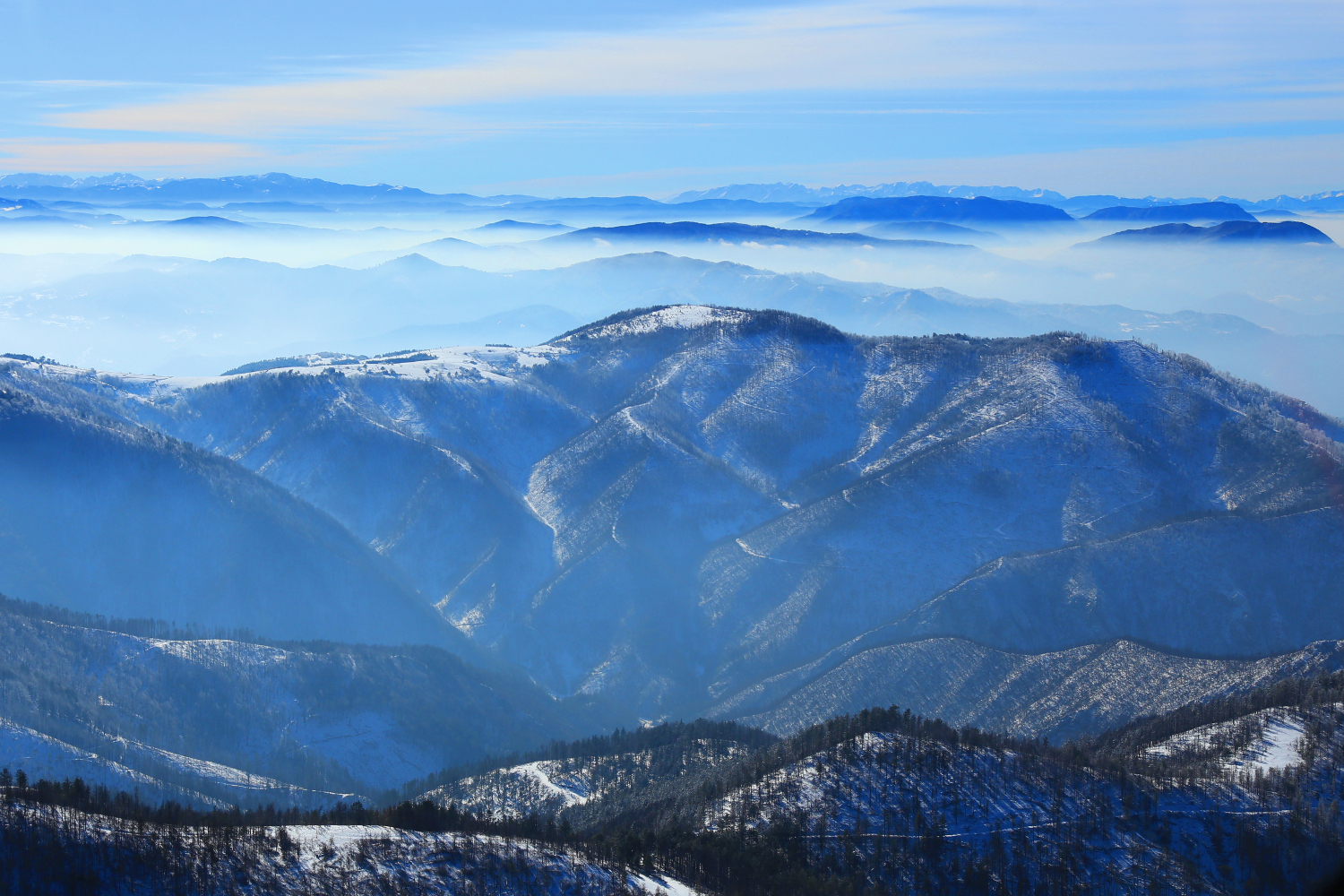
Whether by helicopter – as previous celebrity attendees of Kustendorf festival Johnny Depp and Monica Bellucci arrived – or by scenic winding road, Mokra Gora summit welcomes with the wow factor. About 200km from Belgrade, the stage is set, literally, as Drvengrad wooden village crests a snow-submerged hilltop. The village was built by award-winning film director Emir Kusturica for his film Life Is A Miracle.
The two-time Palme D’Or winner at Cannes added chalet-style rooms (doubling as Hotel Mećavnik), restaurants, bars and underground clandestine quirks, cradled in voluptuous Zlatibor highlands. At the festival, filmmakers from China to Iceland screen their new works for awards, while nightly concerts pulsate into the early hours.
Surrounded by wooded hills, Drvengrad makes an ideal and affordable base for winter pastimes, free of big crowds. Traditional Serbian restaurants and bars permeate the region, the epicentre of rakija production (-15°C is the perfect excuse to sip this strong fruit brandy).
Make it happen: Airport transfers can be arranged from Belgrade through Hotel Mećavnik . The four-hour car journey is lined with conveniences. Helicopter transfers are offered by Balkan Helicopters .
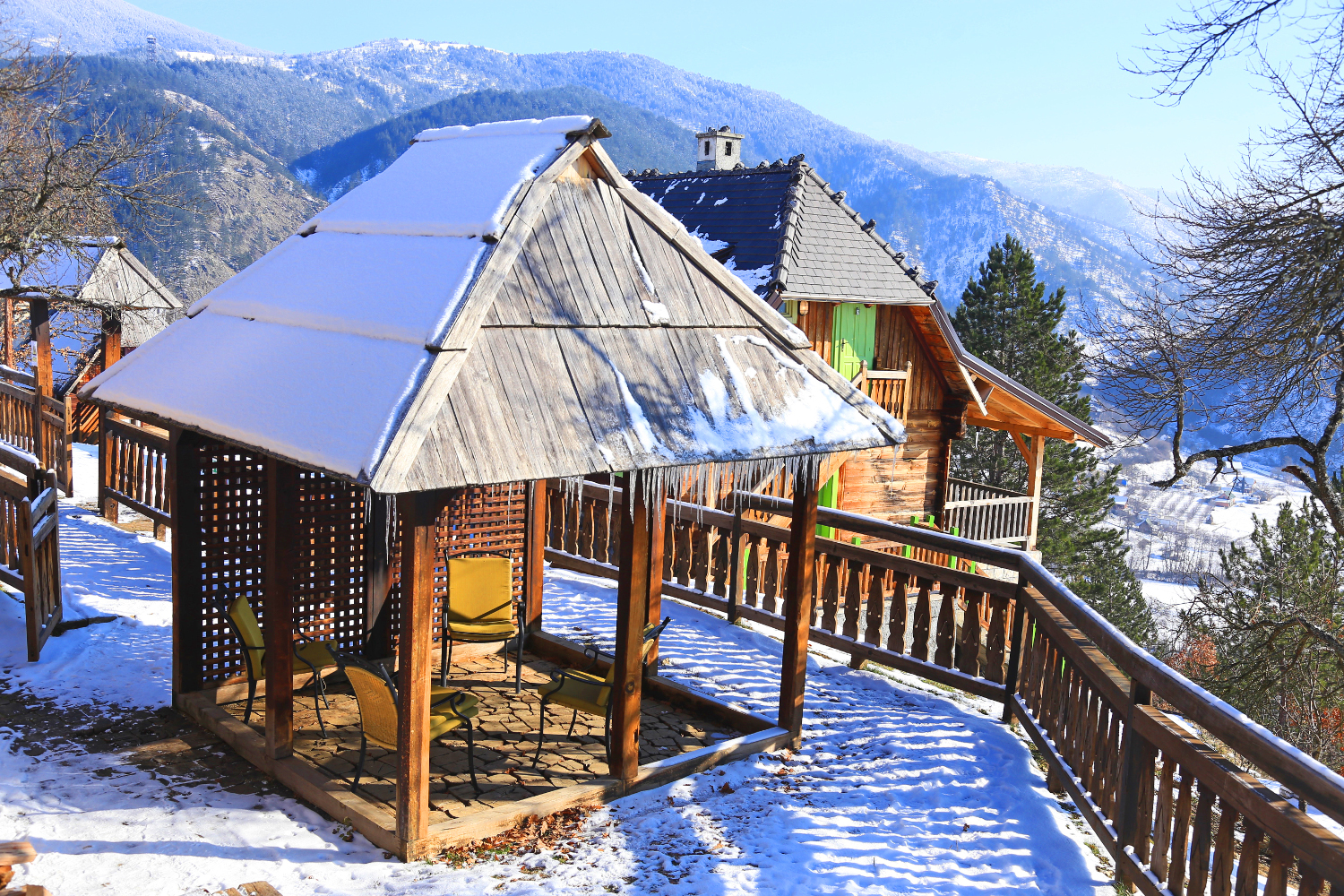
Step straight into history aboard the atmospheric, old-world Šargan Eight steam train, which takes you through tranquil snowy scenes across tall bridges and into tight tunnels.
This narrow-gauge heritage railway was built as part of the line that originally connected Sarajevo to Belgrade during the years of the Yugoslav state. Today, the journey ends near Bosnia’s border, which is just metres across the Drina River. Pristine panoramas belie a tumultuous history in this strategic corner of the Balkans, which is brought to life in English over the train loudspeakers.
Across the border in Bosnia & Hercegovina, eye-catching Andrićgrad is the second creation of film director Emir Kusturica. Conceived as a faux ‘old town’, it was built in stone in Višegrad and its name is a nod to Ivo Andrić, the Nobel Prize-winning Yugoslav novelist. Višegrad is famous for its historic Unesco–listed Mehmet Paša Sokolović Bridge, described in Ivo Andrić’s novel The Bridge on the Drina.
Make it happen: Hop aboard Šargan Eight at Mokra Gora village. The ascent to Šargan Vitasi costs 600DIN; check the winter schedule online . Andrićgrad is a 30-minute taxi ride (approximately €20) from Mokra Gora. From here, buses run to Sarajevo.
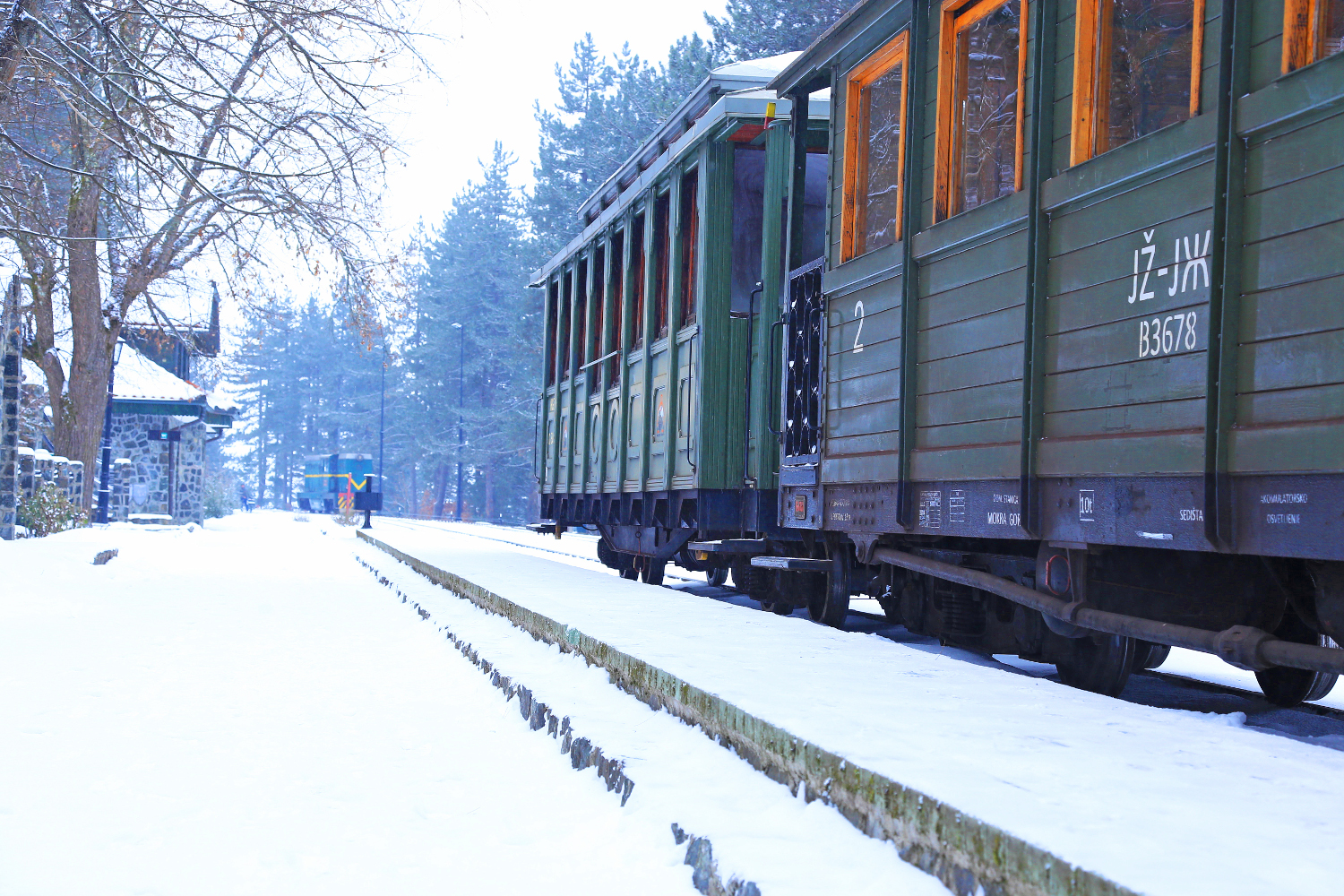
Western Serbia is a prime winter playground. Tara National Park comprises a densely forested massif of hiking trails, bound by the Drina. Waterfalls, caves and a medieval monastery mingle with the towering peaks of Mt Tara and Mt Zvijezda. Hike, drive or go horse riding along isolated snow-covered routes, stopping at viewpoints of deep gorges and azure waters – just watch out for resident brown bears, lynxes and wolves.
The entire Tara National Park and Drina River canyon are on the tentative Unesco World Heritage list for their geological and ecological value. Tara has also recently joined the WWF association Dinaric Alps Parks (which spans eight countries from Albania to Slovenia). From spring 2016 photography enthusiasts can go on a three-day photography tour, led through the remote zones of the national park (enquire at the visitors centre).
The rolling hills of Zlatibor are a trendy ski spot in western Serbia. The tallest peak Tornik (elevation 1490m; zlatibor.org) hosts a prized ski centre, accommodating up to 5400 skiers per hour. Non-skiers can enjoy the blinding-white valley scenery on well-marked mountain walking tracks.
Make it happen: Hotel Zlatibor Mona, 7km from Tornik ski centre, is a good base. Ski-pass rates vary – a one-day pass costs around €15. In winter, Horse Riding Club Dora is based near the 13th-century Rača monastery, 6km south of the town of Bajina Bašta.
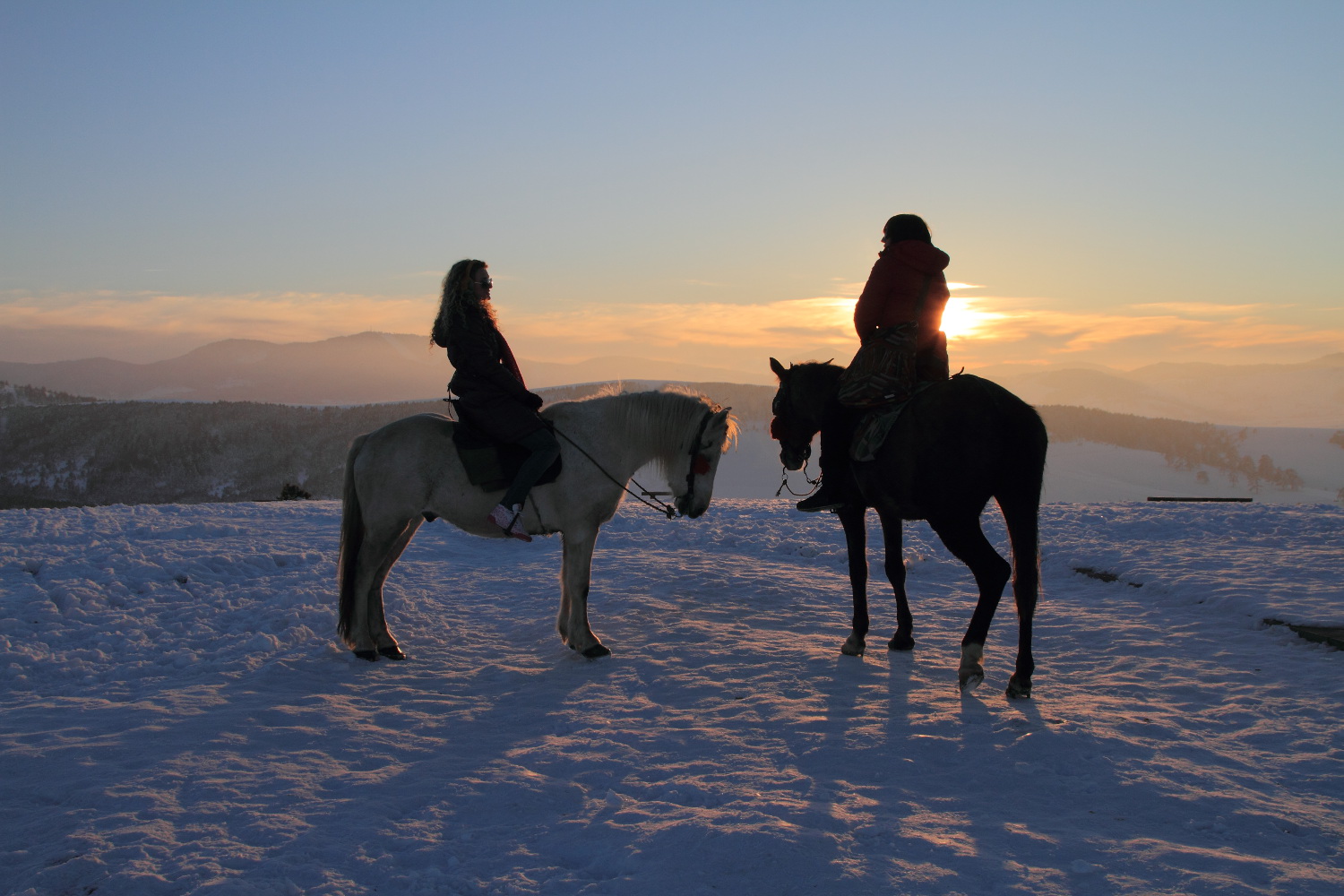
Western Serbia’s outdoors can be enjoyed from the sky, mountaintop or waterway. Helicopter tours (from €40 for 10 minutes) offering exhilarating aerial views of the region were launched in January 2016 by Helimaster and Balkan Helicopters, the first commercial flights in the Balkans. The pilot snakes into towering canyons and swooshes low down ski trails, giving new meaning to the term ‘heli-skiing’.
On the southern slopes of Mt Tara, sparkling Lake Zaovine is a scenic spot cresting a hilltop. This artificial lake was built as a reservoir for the Bajina Bašta dam; five mini-lakes sprinkle the densely wooded surrounds. Wrap up and brave the wintry weather to hike around the lake.
Tracing the Drina River towards the Bosnian border, you’ll find the internationally famous River House. Approaching its 50th birthday, the wooden house is precariously perched on a rock in the river. The current version is actually the sixth generation, as it’s periodically flooded away and rebuilt. Shrouded in a cloak of winter mist, it’s an eery, magnificent sight.
Make it happen: A half-day taxi tour from Mokra Gora costs €40 and stops at Lake Zaovine and the River House. The riverside is lined by traditional eateries, so you can dine while treated to iconic views.
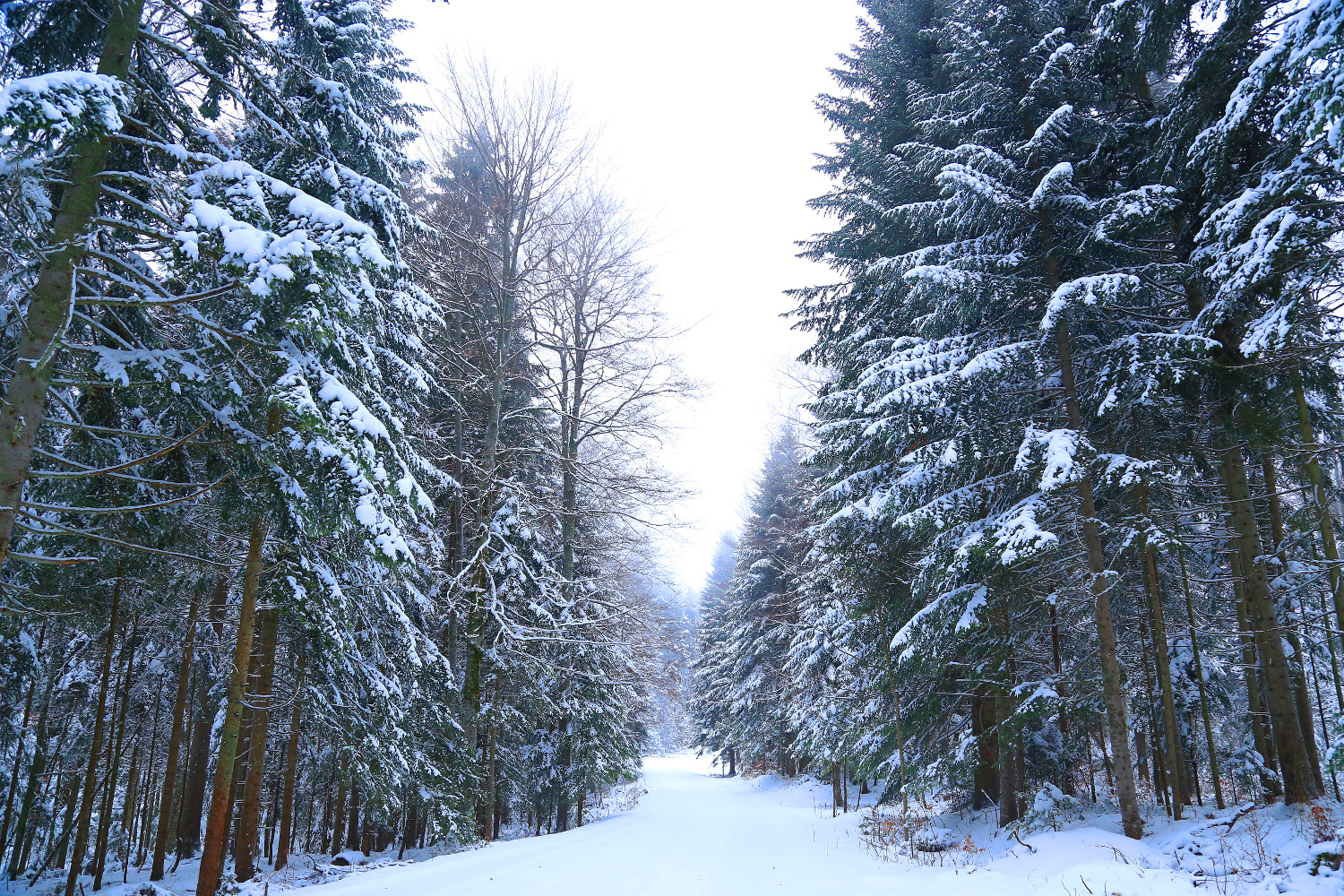
Feasts and local firewater are central themes in western Serbia’s social spirit. Kurta restaurant in Tara National Park (which boasts Lady Gaga among its visitors in 2015) is known for locally produced ingredients. Meat-heavy menus include roast veal, medallions and smoked beef. Intensely sweet-savoury prunes in bacon are a specialty.
Seafood-lovers can gorge at Restoran Dve Lipe on the banks of the Drina. The popular local landmark, dating back to 1929, serves up traditional and affordable Serbian cuisine. Sampling the smoked trout is recommended.
Calorific goodness comes in komplet lepinja (meaning ‘set bread’), which hails from Zlatibor and predates WWII. It’s a flat bun topped with roasted lamb or pork fat, considered the perfect fuel for winter skiing or the ideal hangover cure (needed after a night of rakija). Klekovača is a twist on traditional plum or honey brandy, flavoured with juniper from Mt Tara. Živeli (cheers)!
Make it happen: Any of these restaurants can be included in a half-day sightseeing itinerary of the region. Buses run along the riverside from the town of Užice; check the timetable online .